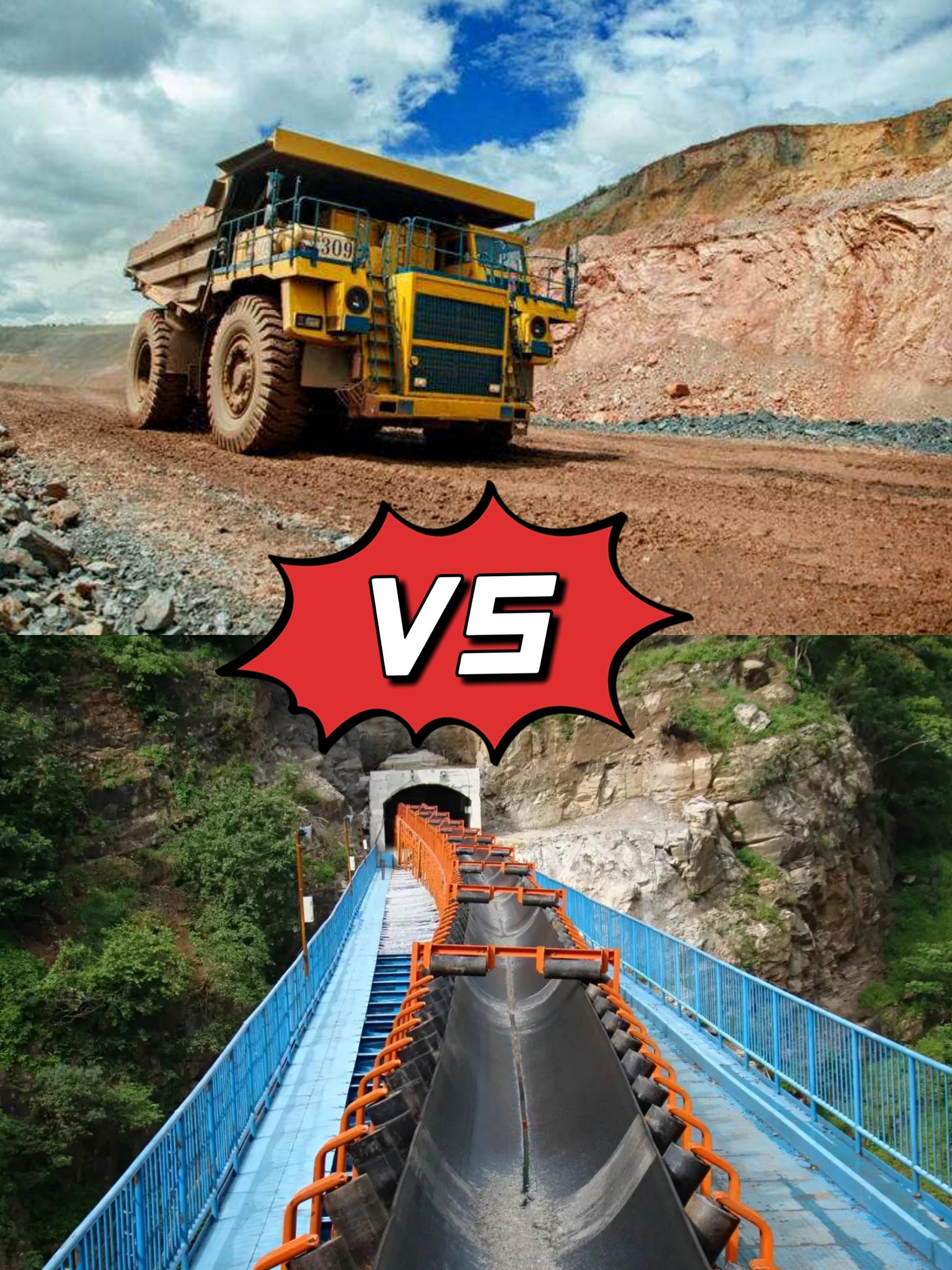
This is a very interesting discussion. What do you think about Truck vs Conveyor? Anybody can tell me your choice and reason?
The study of many overland conveyor (OLC) vs. truck haulage reveal some basic and new facts:
1. Break even point for OLC is a transport circuit that must convey 2 million tons per annum over more than one kilometer or the total multiplier of tons and kilometers . This is further dependent on local fuel costs and terrain difficulty. Some countries subsidize their diesel fuel that artificially lowers the truck penalty - that is now changing.
2. Conveyors can often be routed in a more direct path than the road haulage thereby reducing the kilometer penalty. The path may include bridges over rivers, roads, railroads, etc.
3. Conveyors can negotiate rough terrain to 18 degrees or more making for shorter paths or that would require tunneling by trucks.
4. Conveyor are more efficient with fuel usage than trucks especially with the payload of an empty truck return haul
5. Conveyor designs have become more efficient with new rubber compounds and new design methods, that lower rolling energy by 50% or more than many suppliers of rubbers from 5 years ago. Trucks have not seen such improvements in rolling losses. A case in point is the Curragh 20 km single flight overland that transports 2500 t/h. It is light and fast (7.5 m/s). It is very light for the tons conveyed due to efficient use of sheet metal components for is idler and belt support and wind shielding. IN 2007, it was the fastest operating belt conveyor in Australia. Speed lowers the conveyor system width which is the most capital intensive parameter. Some have disparaged the design and been wrong in their assessment. It's 5 m carry side and 10 m return idler spacing is proven to be appropriate when the plant has been properly operated.
6. New research into more efficient belt conveyor operations is proving that further cost effective gains are possible compared to trucks and trains. More difficult terrain, stronger belts, lower belt strength as measured by the necessary Safety Factor, lower rolling resistance designs, and lower metal mass per km all point to ongoing improvements over truck and trains.
7. New conveyor configurations can be found with better trough shapes, pipe, and semi-pipe designs are now a reality where high lifts and sharp curvatures are required that add to belt conveyor transport efficiency.
8. Studies of +100 km conveyors does demonstrate the ability for long and efficient transport compared wih train haulage. Risk Analysis then becomes an important factor in the "what if" scenarios.

 ZOOMRY
ZOOMRY
